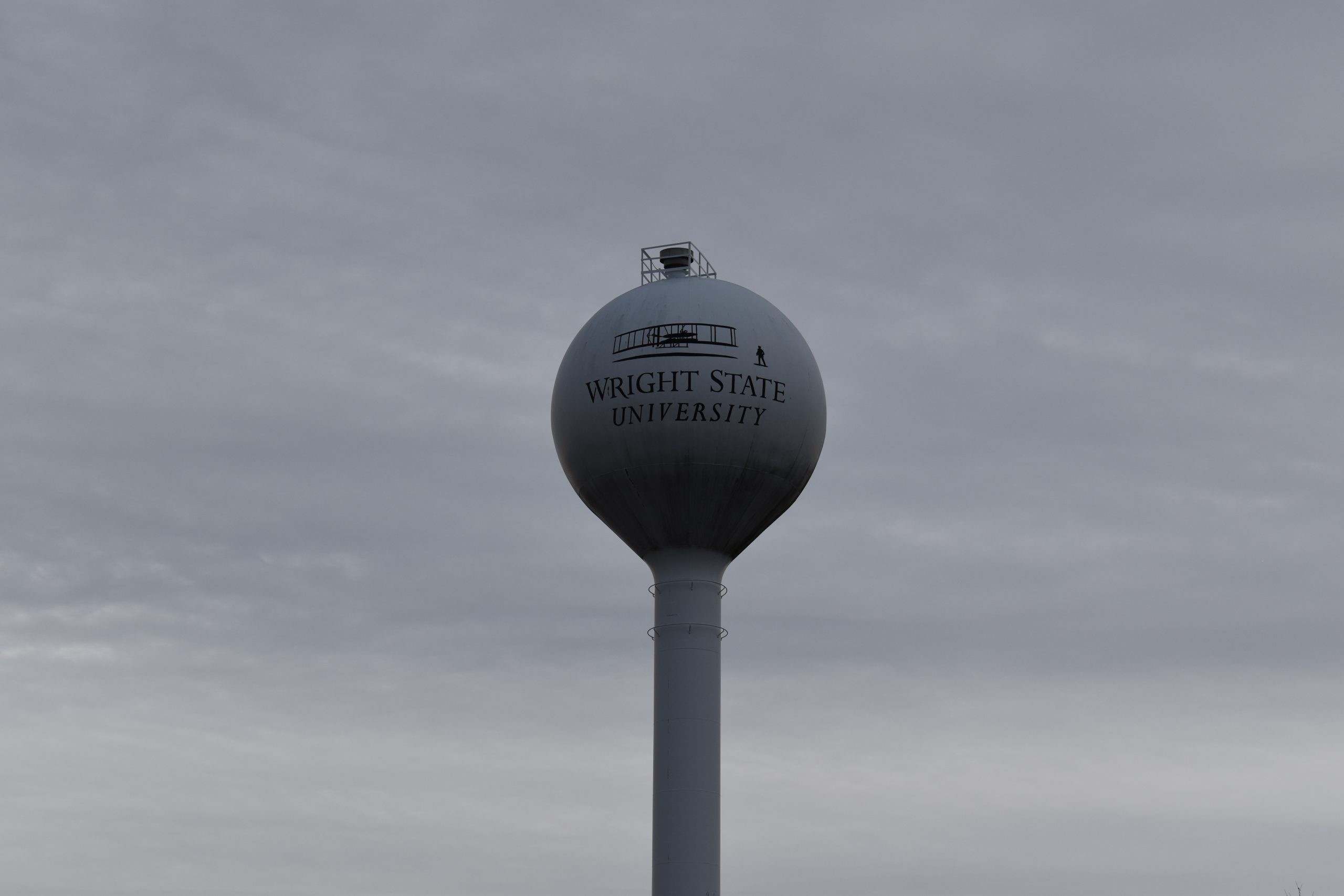
Wright State Water Tower | Photo by Grace Ramsdell | The Wright State Guardian
The Wright State University (WSU) campus water advisory caused by an HVAC construction accident is resolved. In the process of fixing the issue, the university discovered contractors working on the systems did not obtain the correct digging permits.
Water warning
Maintenance crews working on the HVAC air system accidentally punctured an underground pipe containing the toxic chemical glycol according to WSU’s Environmental Health and Safety Board. It was later reported by campus officials that these contractors did not have the correct digging permits, and did not have permission to dig near this pipe.
This pipe, not directly connected to the water system, leaked into a connector pipe that leads into the main water system. This leak caused contamination concerns, triggering the water advisory. The precautionary warning, issued in the second week of June, advised students, staff, faculty and WSU campus guests not to drink or use the water on campus for any reason due to possible contamination from the accident.
Despite concerns, WSU’s Environmental Health and Safety Board reported that no cross-contamination in the water system occurred and that they contained the incident to the Biological Sciences Building.
The Board also reported the two-week delay in lifting the water advisory stemmed from water testing and flushing out the system.
“In general, the advisory is issued, the corrective measures are taken, the system is rechecked, and the advisory is removed when the water quality meets the EPA’s standards,” Marjorie Markopoulos, director of Environmental Health and Safety, wrote.
Prevention
In their statement, mentioned above, the university expresses future construction projects will follow campus policies and ensure that contractors have the proper permits.
Student Opinions
During the advisory, summer semester students continued with normal campus life. Some students like senior Josiah Pugh expressed some annoyance at the inconvenience but are overall satisfied with WSU’s handling of this incident.
“I think they did a pretty decent job,” Pugh said. “Especially through the emails and putting signs on all the doors of the buildings.”
Initially, details of the construction accident were not released to the students. As the advisory continued, the campus communication system kept students, staff and faculty updated about the situation. Signs were posted in all the campus buildings.
Tap Water Results
During the water warning, the Environmental Health and Safety Board published their annual consumer notice of tap water results report. Testing of campus tap water, not related to the pipe accident, is conducted each year required by the Ohio Environmental Protection Agency (EPA).
According to the results, six areas on campus were identified with more than 15 parts per billion (ppb) of lead in the water. The report also pointed out that lead, if consumed in large amounts via drinking water, can be dangerous to humans, especially children and pregnant women.
The university attributed the spike in lead content to water sitting in the pipes due to inactivity during the coronavirus pandemic. During the testing period, WSU increased offerings of in-person classes, while students continue to live and work on campus through the summer semester.
According to the statement made by the university, plans to solve the issue include flushing out the system and increasing testing throughout the academic year.
